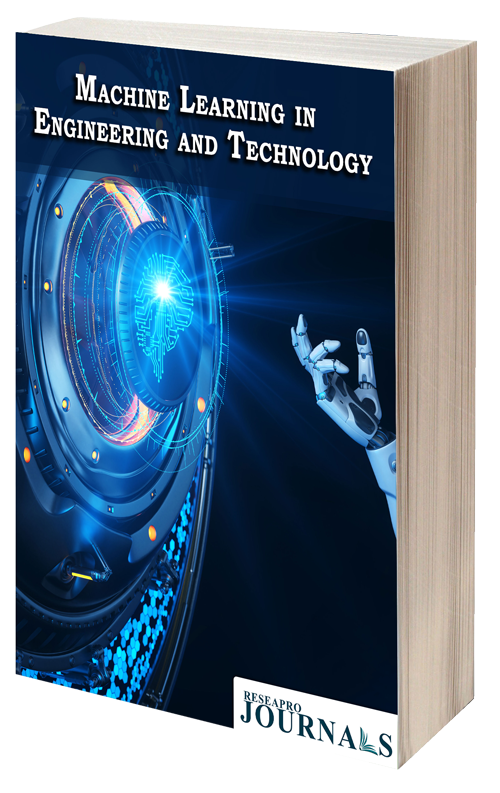
Issue: 01 (2023)
Machine learning algorithms are frameworks used by the Artificial Intelligence (AI) system to administer its primary function of predicting output values from given input data. Machine learning algorithms operate through two fundamental processes: classification and regression. Machine learning algorithms estimate new output values using historical data as input. These algorithms are frequently used in recommendation engines, business process automation (BPA), predictive maintenance, spam filtering, malware threat detection, and fraud detection. Machine learning is utilized in various applications, including speech recognition in several mobile apps, spam-filtering email filters, and even personalized recommendation engines on websites and banking software.
A machine learning system may automatically learn to interpret visual input by utilizing pre-programmed computational frameworks. The system is subjected to numerous data analyses until it can distinguish between features and recognize images. The primary techniques used are convolutional neural networks, an integral neural network, and deep learning, a subset of machine learning. Algorithms enable the system to learn independently to replace human labor in tasks like picture recognition. Computer vision can be applied to Self-driving cars, facial recognition, augmented and mixed reality, and healthcare. Computer vision applications have been effectively used in categorizing images, retrieving images based on contents, detecting specific objects, and even detecting motion for object tracking and recognition.
Supervised learning refers to the machine learning method of training models using labeled data. After being trained with a labeled dataset, the machine- learning model analyzes the features of new inputs and determines the mapping function to associate the input and output variables. Regression, Logistic Regression, Classification, Naive Bayes Classifiers, K-NN (k nearest neighbors), Decision Trees, and Support Vector Machines are various types of supervised machine learning. Supervised learning can be applied to risk assessments, image classification, fraud detection, and visual recognition in real-life settings. Unsupervised learning teaches a machine to use unlabeled, unclassified data and allows the algorithm to operate the data without monitoring. The objective of unsupervised learning is to extract structure and patterns from the input data independently. K-Means clustering, Hierarchical clustering, Apriori algorithm, Principal Component Analysis, Singular Value Decomposition, and Independent Component Analysis are some algorithms used in unsupervised learning.
Deep learning, a subset of machine learning, is an artificial neural network with three or more layers, inspired by the structure and operation of the brain. Artificial neural networks seek to mimic human brain functions, but falling far short of matching its ability allows them to "learn" from vast volumes of data. Deep Learning models are highly suited for applications like picture recognition, speech recognition, and natural language processing because they can automatically learn characteristics from the input. The three most popular deep
Rewarding desired behaviors and punishing undesirable ones are the basic tenets of the machine learning training method known as reinforcement learning. A reinforcement learning agent can typically perceive and comprehend its surroundings, act, and learn by making mistakes. The agent must decide how to explore new states while maximizing its reward to create the best possible policy through a trade-off between exploration and exploitation. The best overall action plan can entail making short-term sacrifices to balance both. As a result, the agent must gather sufficient data to ensure optimum potential in future decision-making.
Reproductive endocrinology is a sub-specialty of obstetrics and gynecology that focuses on the hormonal and reproductive health of both men and women. It involves the diagnosis and treatment of disorders related to fertility, menstrual cycle irregularities, hormonal imbalances, and reproductive endocrine disorders. Reproductive endocrinologists use a range of treatments, including medications, surgery, and assisted reproductive technologies, to address these issues and improve fertility and reproductive health outcomes. This field of medicine requires specialized training in endocrinology, infertility, and reproductive medicine.
A Bayesian network (BN) is a probabilistic graphical model describing information about an uncertain domain where each node relates to a random variable, and each edge reflects the conditional probability for the relevant random variables. It is also known as a Bayesian model, Bayes network, belief network, or decision network. Bayesian networks are excellent at analyzing an event that has already happened and determining the likelihood that any one of multiple potential known causes was a contributing element. Bayesian networks employ probability theory for prediction and anomaly detection and are created from a probability distribution, making them probabilistic. These networks can be used for a wide range of applications, including forecasting, detecting anomalies, diagnosing, automated insight, reasoning, predicting time series, and making decisions in the face of ambiguity.
The extraction of meaningful information from massive data collections is known as data mining. Finding patterns, correlations, and trends in the data entails applying various techniques from statistics, machine learning, and database systems. Making data-driven decisions, resolving corporate issues, and discovering hidden insights can all be done with this information. Finance, healthcare, retail, and telecommunications are just a few industries that frequently use data mining methods and technology. Data mining is one of the most effective methods for helping businesspeople, academics, and individuals to mine valuable information from massive data sets.